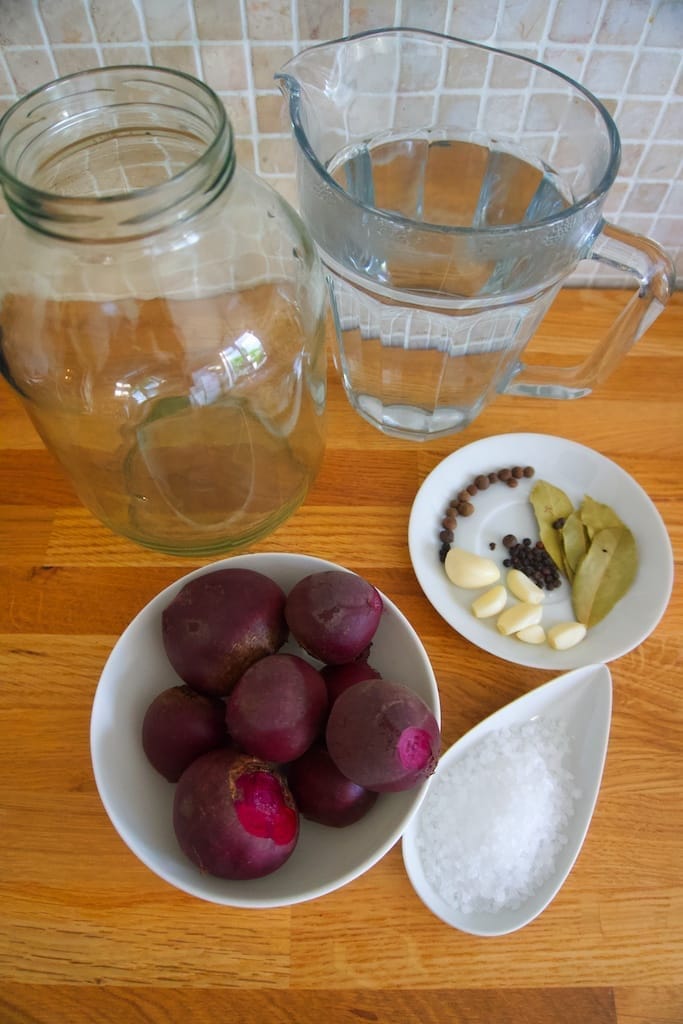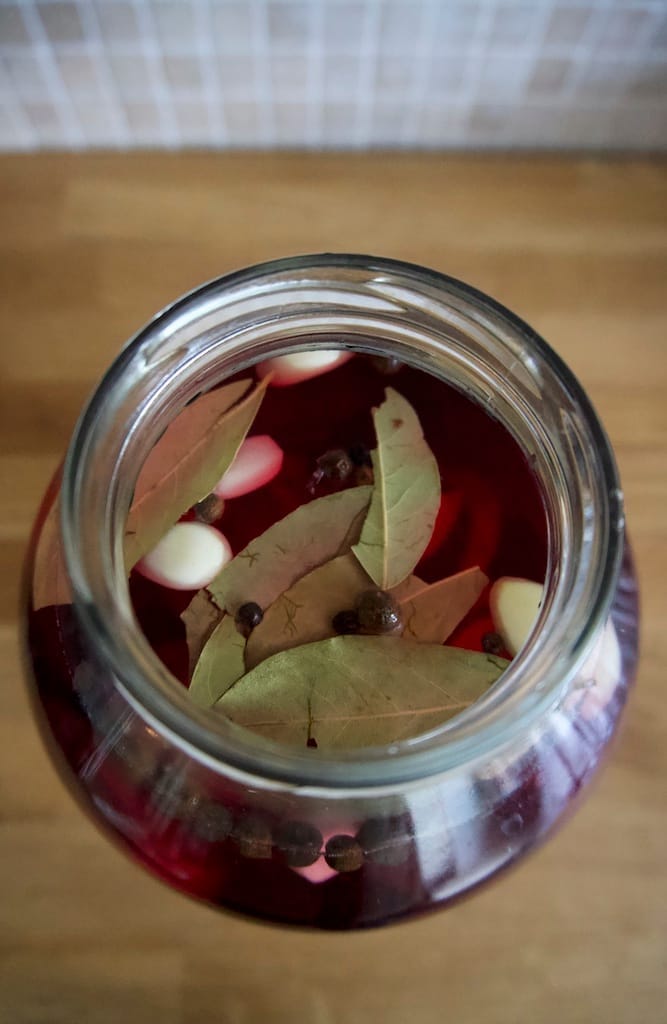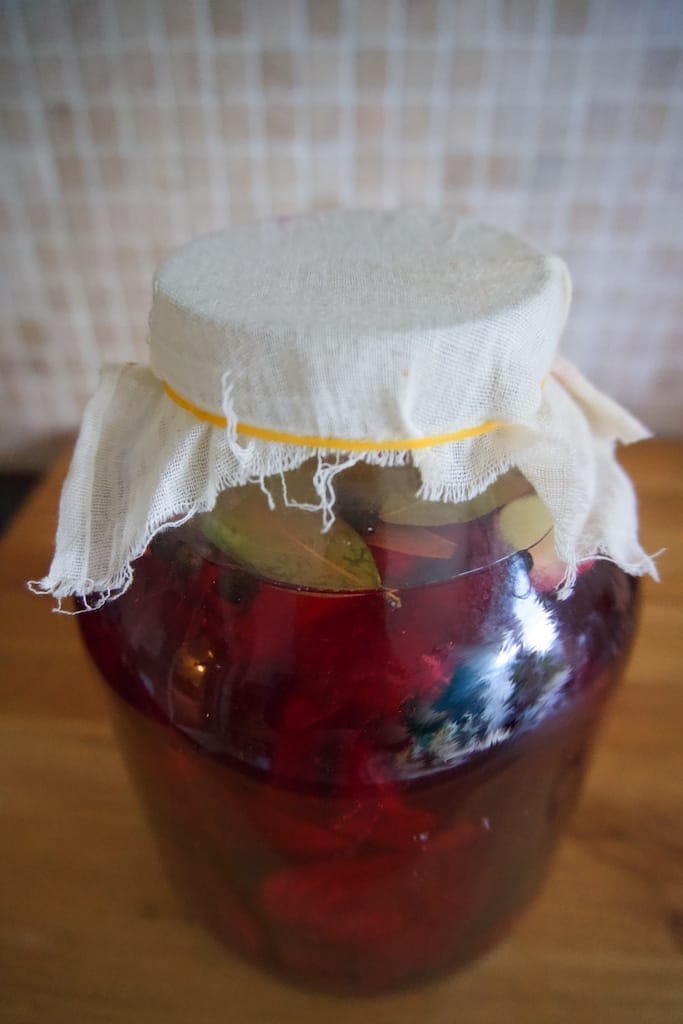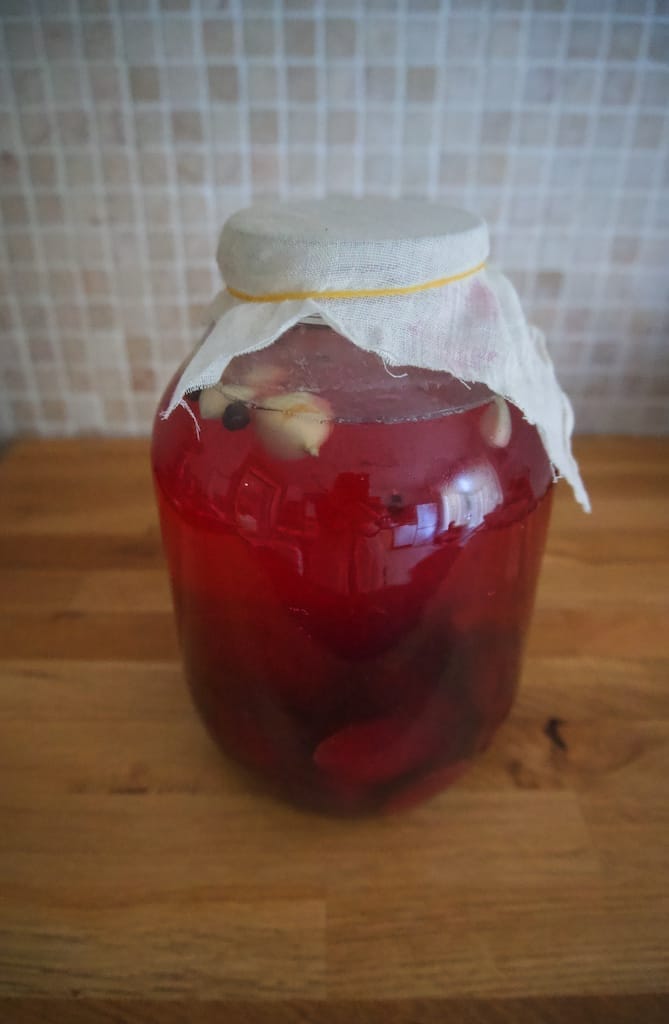
Make your own fermented beetroot juice
It’s easier than you think!
All you need to ferment your own beetroot juice is just a bunch of beetroots, a large jar and some spices you probably already have in your cupboard.
Fermented beetroot juice health benefits
There are numerous fermented beetroot juice benefits, like:
enhanced gut health from probiotics,
improved cardiovascular health due to nitrates,
reduced inflammation from antioxidants.
better liver function,
improved athletic performance,
overall detoxification.
This is just to mention a few!
Unique flavour
As you might know me a little bit by now, flavour is the thing number one for me. If you like something, you want to eat it more. Simple. And fermented beetroot juice has this unique flavour you cannot get anywhere else. Once you try it you will definitely want more. It’s refreshing, delicious and one of the super foods.
The gear
What you will need to ferment you down beetroots is: 1 large jar - mine is of 2 litres. It can be any jar, no lid necessary. If your jar is bigger or smaller, please calculate the ingredients accordingly.

The ingredients
400-500 of beetroots, weighed after trimming the stalks.
1 tablespoon of good quality salt (not the cheap supermarket one) per 1 litre of water,
4-5 bay leaves,
5-7 garlic cloves, peeled, whole,
10-15 allspice berries,
15-20 whole black peppercorns,
Around 1,5 litre of water, boiled and cooled down to room temperature.

The procedure
Add the salt to the water and stir well. Make sure all the salt is dissolved. Set aside.
Slice the beetroots into thick 1/2cm slices. Place the beetroot slices in the jar.
Add other spices into the jar, add salted water and stir everything. Place a piece of cloth on top of the jar and secure it with a rubber band. Do not cover with a lid or very thick cloth as the juice needs to ‘breathe’. Keep the jar on the worktop or on the floor away from direct sunlight.

The fermentation
Let it ferment freely. The juice will start to bubble on day 2 or 3. On day 5-6 there might appear white buildup on the surface. It is a natural process called Kahm Yeast and you might want to scoop it out or stir it in, although there is no need to. It is neutral to you, however, keep an eye on mould. Read more here how to tell the difference between Kahm Yeast and mould.

The final part
Have a little taste of the juice after 7-10 days of fermentation. If you like the flavour and you feel that the juice is fermented enough, strain it to glass bottles or jars, put the lids on and place in the fridge. Drink 1/2 cup daily. If you find the flavour too strong or you have some gut reaction, which is likely to happen when you are not used ot fermented foods, feel free to dilute the juice with lukewarm water at 1:1, or even 1:2, ratio.
For more gut friendly recipes check out my white borscht recipe and fermented cabbage.

Created with © systeme.io




